It is no secret that sustainability is becoming increasingly important to the modern consumer. To appeal to this trend, many industries are adopting sustainability terms in their marketing and eco-friendly labels are popping up left and right.
However, a label or environmentally friendly packaging does not guarantee a product’s sustainability.
Greenwashing is when brands use misleading eco-friendly labels to assert their environmental credentials. The practice tricks consumers into thinking they are purchasing a sustainable product.
There are genuine certifications out there for consumers, but even these vary in authenticity. Some are specific to certain industries. Other certifications are more general. In this article, we’ll delve into some of the major industries promoting eco-friendliness and the sustainability labels they associate with. Let’s see how they operate.
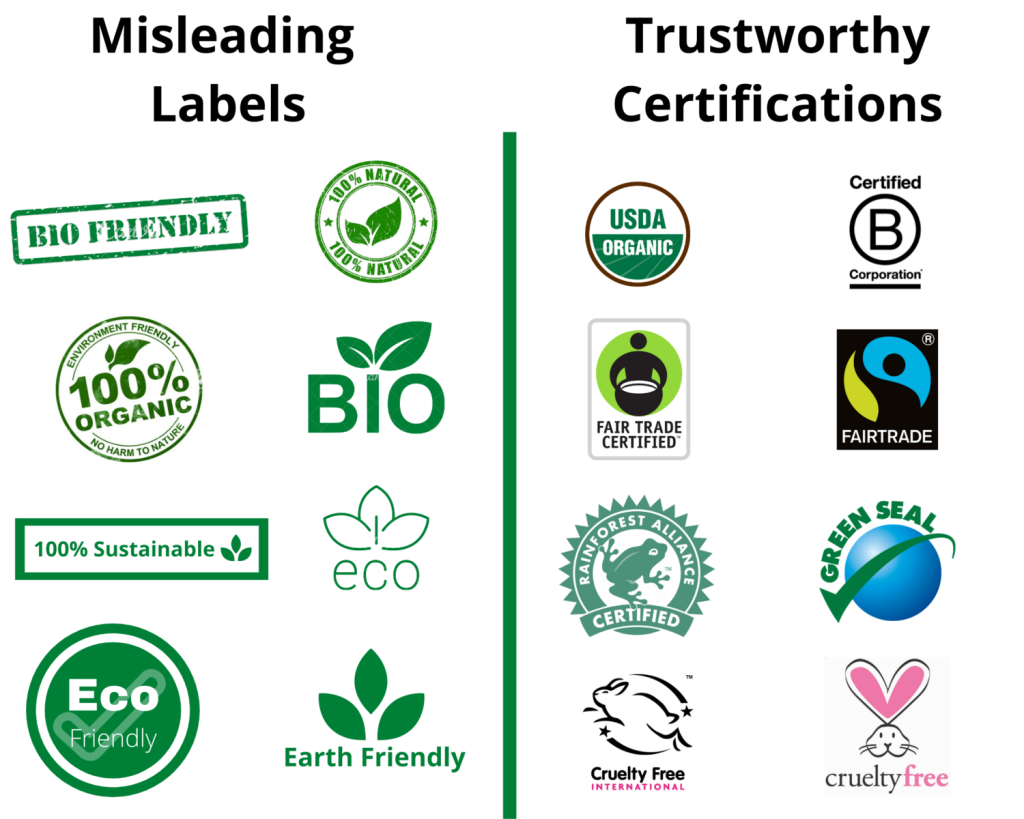
Eco-Friendly Labels for Sustainable Clothing
The clothing industry has changed radically in recent decades largely because of negative attention directed towards its sustainability practices. Consumers are increasingly aware of the term fast fashion. This is the practice of churning out high volumes of cheap, disposable items, often using eco-unfriendly materials.
The fashion industry also uses huge amounts of water and other resources. It is responsible for high levels of carbon emissions and waste materials. To combat the environmental damage, some clothing manufacturers are adopting sustainable production practices which are popular with consumers. As a result, more and more clothing brands are using certification labels similar to those used on genuinely sustainable products.
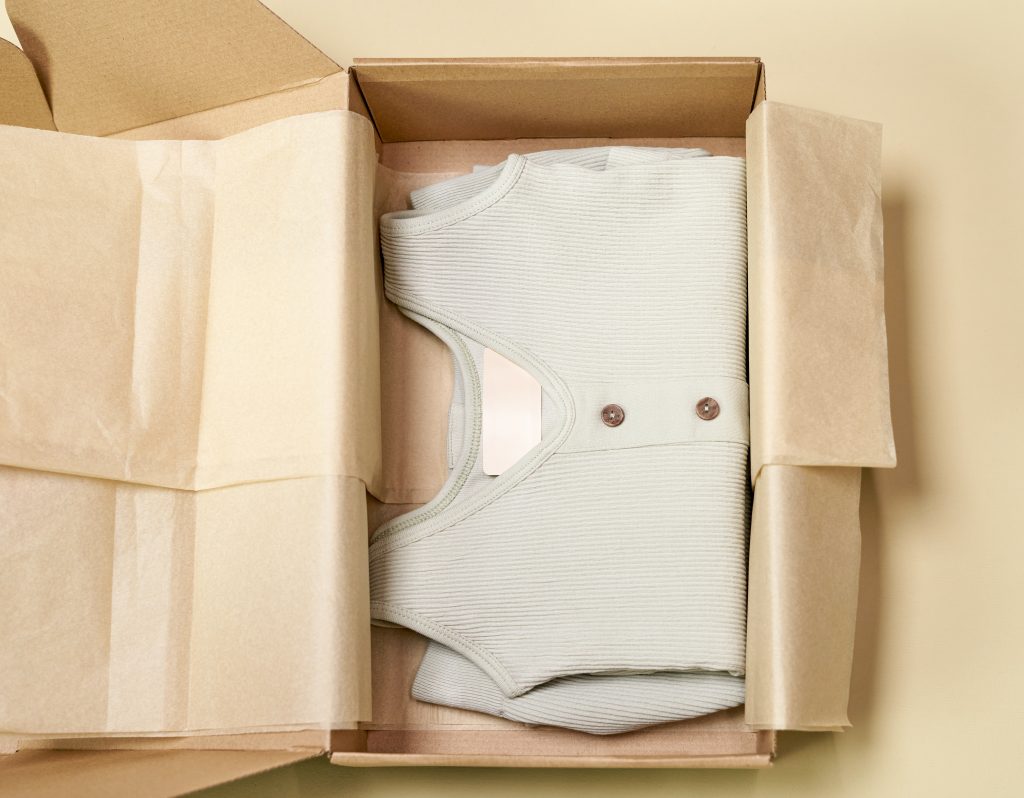
When it comes to sustainable clothing, there is one thing to be wary of: the prevalence of uncertified claims. This year, the Changing Markets Foundation found that 59% of claims by 50 major fashion brands – such as ASOS and H&M – misled customers with unsubstantiated claims about sustainability.
Findings show that these companies often falsely labelled products ‘green’ or environmentally friendly. Take H&M’s ‘Conscious Collection’ for example. The line had even higher levels of fossil-fuel-produced, non-biodegradable synthetic fibres than their regular range. This is why it is essential for consumers to look for proper certification on product packaging and labels.
Global Organic Textiles Standard
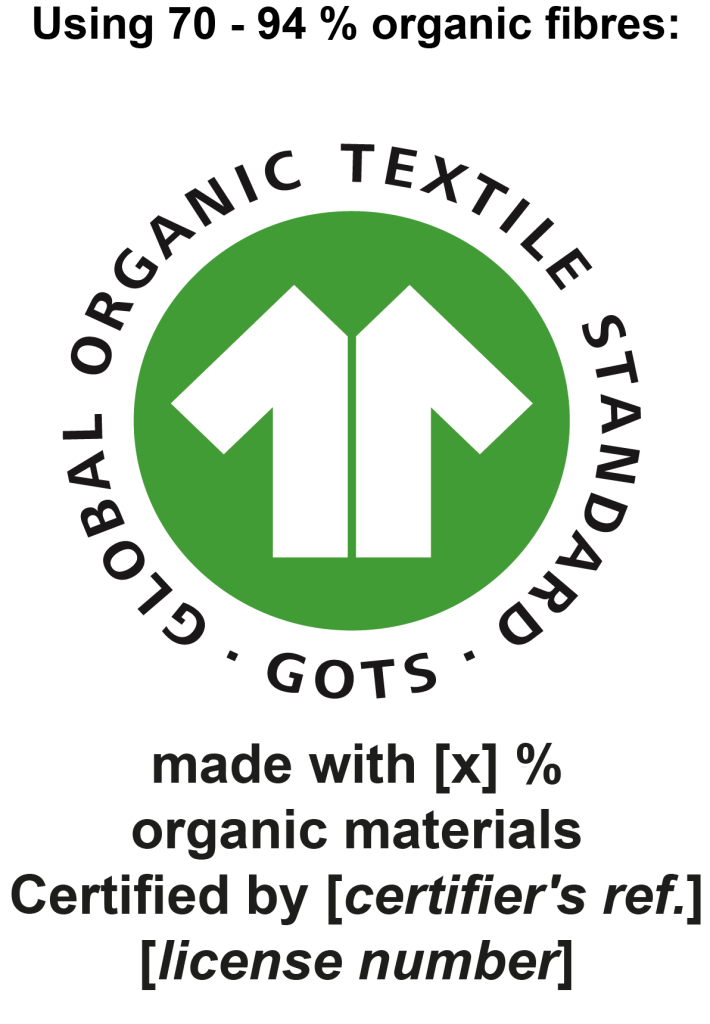
An example of a legitimate eco-friendly label is the Global Organic Textiles Standard (GOTS). GOTS is a leading, internationally recognised certification label for clothing.
For brands to acquire this certification, they must meet the following criteria:
- Textiles must be at least 70% certified organic natural fibres
- Products conform to GOTS environmental and social criteria
- Each stage of the production process must be sustainable. This includes manufacture, packaging, and distribution
- Independent, on-site inspections of the entire supply chain
Upon certification, a brand certified by GOTS receives a unique license number. Free access to the brand’s environmental credentials is available by entering the licence number into the GOTS website. This is great for the consumer as it allows access to much of the raw information. Discovering the origin of an item is a key part of measuring its sustainability.
With GOTS, a company must renew its license annually. This is to ensure that companies are continuing to observe these practices. GOTS has had substantial growth since its creation. As of 2019, GOTS has certified over 7,700 facilities.
B Corporation by B Lab
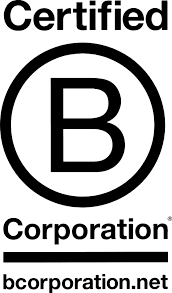
Other certifications like B Corporation by B Lab are less specific. B Corporation certifies a range of industries to influence businesses to meet social sustainability and environmental performance standards. It also ensures accountability and transparency to the public. B Lab has even partnered with the United Nations to help adopt its Sustainable Development Goals into practical business processes.
This certification looks at where a company will be in the future, rather than where it is now. It provides the means for producers to measure and improve their total performance on sustainability over time.
The B Corp label appears on 3,000 brands in 70 countries. Popular brands include Patagonia and Kathmandu. B corporation certification includes the following indicators:
- An evaluation of how the company’s operations and business model impact their workers, community, environment, and customers
- Tools for companies to measure and improve their environmental impact
- The commitment to continuous improvement, sustainability training, and benefits to farmers
Made in Green by Oeko-Tex
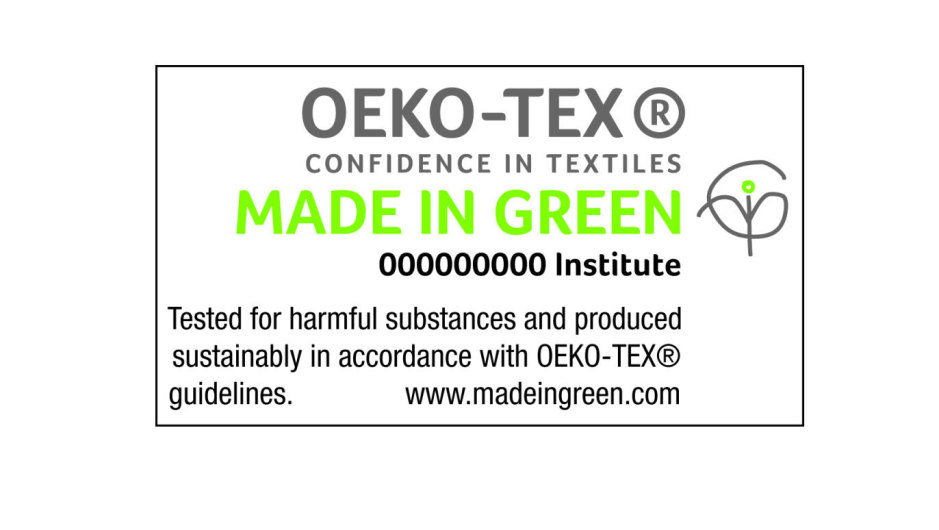
The Oeko-Tex certification appears most often in the clothing industry. It also extends to household textiles such as bed linens and towels. The main certification by Oeko-Tex, the ‘Standard 100’, focuses on limiting potentially harmful chemicals.
Oeko-Tex’s ‘Made in Green’ certification has an additional commitment to sustainability. This certification credits environmentally friendly and socially responsible production facilities. To receive certification, a brand must meet renewable energy and materials criteria in its production process. Each Made in Green label comes with a unique product ID and QR code that allows consumers to find relevant information. The place where an item was made and the facilities used in its manufacture can be found using the product ID. This is great for transparency and puts direct information in the hands of the consumer. A Made in Green certification label also entails:
- Certification of every component of a product, including minor elements such as buttons, zips, and/or studs
- Social responsibility checks on the manufacturer such as fair working conditions and occupational safety
- Proper waste management and responsible handling of wastewater and emissions
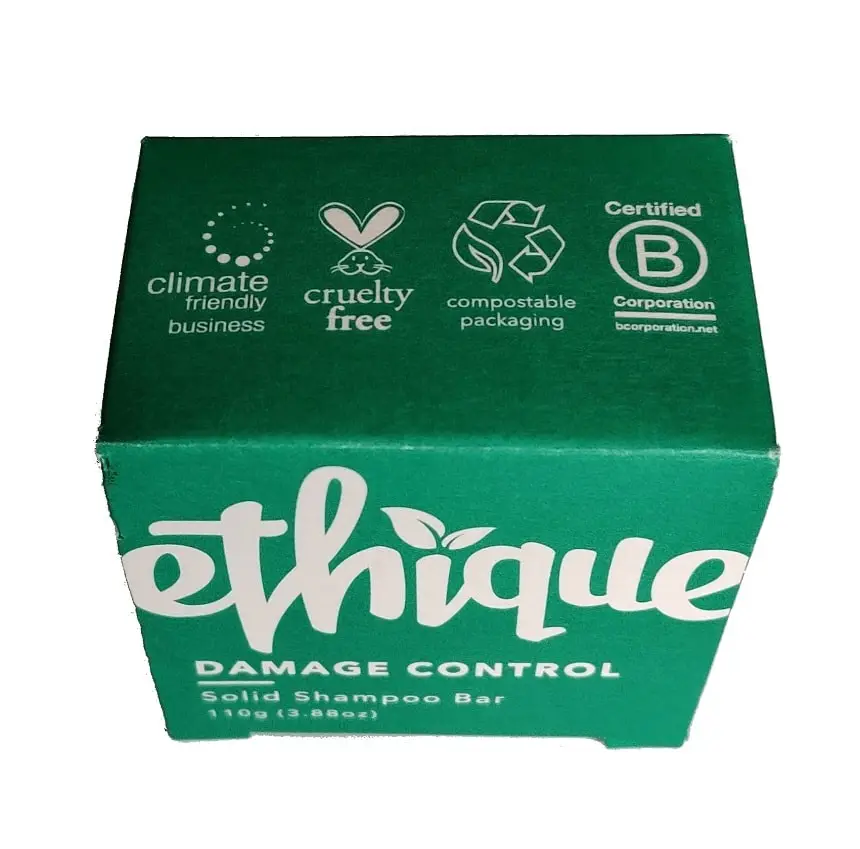
Source: Write.co.nz
Eco-friendly Labels for Sustainable Food
The food industry has long had issues with sustainability. Consider the seaspiracy documentary and what it revealed. Finding sustainable foods can be simpler, but it can also be more complicated, than finding sustainable clothing.

Food production still impacts the environment in a number of ways. It can contribute to deforestation, droughts, and soil fertility damage from crop production. It can also release waste into waterways, greenhouse gas emissions, and other byproducts. There is also the issue of excessive and wasteful packaging.
Yet, there is much more available knowledge about food production. A consumer who shops ethically will know, for example, that beef production can produce high methane levels.
Unfortunately, food labels can be extremely misleading. Many products employ natural landscapes or environmentally friendly buzzwords in their advertisements and packaging. ‘Natural’ is a term that often appears on food products. This may appeal to the consumer, but there is often no proof that it is the case.
Rainforest Alliance
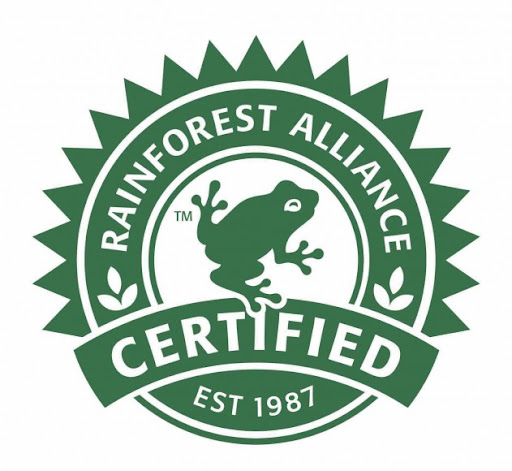
The Rainforest Alliance certification has been prominent in Central America for over 30 years. It is currently operating in 70 countries. The Alliance works with farmers on sustainability projects that introduce ecosystem conservation. It also works to protect waterways and wild animals such as keystone species. The organisation is setting standards for agriculture and also in the area of human rights.
The Alliance certifies farms of various sizes, for over 100 different types of crops. Its sustainable agriculture initiative provides training programs for farmers in the effective management of crop production and distribution. This kind of management can help the world achieve zero hunger. Everyday crops that the Rainforest Alliance certifies include coffee, tea, cocoa, and bananas.
Consequently, the Rainforest Alliance Certified seal only appears on products that meet its standards for crop production. However, rather than setting pre-defined production targets, farmers use smart meters to set farming goals based on what produce is the most beneficial and feasible for their situation. The Rainforest Alliance also encourages sustainability in other ways by enacting the following:
- The safeguarding of forests and biodiversity
- Safer and reduced usage of pesticides
- Climate-smart farming practices
Fairtrade

Fairtrade focuses on human rights and working conditions, but not exclusively. Directly and indirectly, Fairtrade promotes sustainability. It also promotes training programs for farmers in sustainable production methods. Fairtrade’s standards guide production of farming in ways that mitigate its impact on climate change. A Fairtrade certification proves that the product’s supplier:
- Focusses on paying farmers a fair price for their products and giving workers a fair wage
- Encourages responsible water and waste management (e.g.: e-waste)
- preserves biodiversity and soil fertility with minimal use of pesticides and agrochemicals
- is 50% owned by producers
Eco-friendly Labels for Sustainable Beauty Products
Animal testing has been a practice associated with the cosmetics industry for some time. But what of sustainability? Microplastics in cosmetics are one of many issues affecting the environment. Tiny plastic beads, smaller than the human eye can see, are used to scrub and exfoliate skin. These go straight down the sink and end up in waterways, contributing to aquatic pollution. Also, additives, such as glitter found in makeup, and toxic chemicals found in sunscreen, find their way into marine environments and damage marine life.
Whilst the public is largely aware of palm oil in the food industry, its prevalence in the cosmetics industry is lesser known. It is commonly found in items such as lipstick and shampoo.
Much like the food industry, greenwashing is rampant in cosmetics. Products use nature-themed scents and designs and lean into this to appear sustainable. Regulation of this kind of environmental-themed packaging depends on the country. However, guidelines for cosmetics are generally less strict than they are for the food industry. Cosmetics are often quick to label themselves ‘toxic-free’ as a distraction from other harmful ingredients contained in them.
COSMOS

B Corp, Rainforest Alliance, and Fairtrade all extend their certifications to the beauty industry. COSMOS certification is, however, entirely focused on cosmetics.
Cosmos works with several different certification bodies to have an international reach. Their certification covers a number of steps in the production process, including the origin and processing of ingredients and the total product composition. It also considers the storage and packaging, environmental management, and labelling of products.
While some certifications come with a percentage of criteria met, COSMOS has split its certification into multiple levels: Products can be labelled ‘COSMOS Organic’ for products that comply with the COSMOS Standard in all respects. ‘COSMOS Natural’ refers to products that meet those standards but do not reach minimum organic percentages. Certified organic ingredients are referred to as ‘COSMOS CERTIFIED’, and raw materials are labelled ‘COSMOS APPROVED’.
This may seem confusing at first. But, by having a tiered system, COSMOS certification gives the consumer options. This includes selecting certified or uncertified products, and certified organic or uncertified organic. If this is communicated clearly, it can be of benefit because it gives the consumer transparency.
In summary, the COSMOS certification entails:
- Four different levels for the four tiers of certification
- Classifications on the origin and composition of every single cosmetic ingredient or mixture of cosmetic ingredients
- Restrictions on product packaging
SUSTAINABLE BUILDING MATERIALS
Materials used in construction impact many aspects of sustainability. For example, the sourcing of raw materials like lumber and metal, and the use of non-renewable resources such as oil. It also includes waste, water pollution, and greenhouse gas emissions. The building industry is therefore very much in need of sustainable certification labels.
Construction, in many countries, is also prone to greenwashing. This frequently occurs in uncertified claims about carbon neutrality or building companies implying that the timber they use is grown sustainably.
Cradle to Cradle Products Innovation
The Cradle to Cradle Products Innovation Institute provides certification for sustainable building materials. Like some other certifications, Cradle to Cradle uses the United Nations Sustainable Development Goals as a framework. This helps businesses create products that address important issues. Cradle to Cradle certifies a large range of products used in the building trade such as paint, wood, piping, and insulation. They also cater to interior design and furniture. Their certification is designed to:
- Ensure materials are safe for humans and the environment
- Protect clean air, promote renewable energy, and reduce harmful emissions.
- Safeguard clean water and healthy soils.
Multiple certifications also exist for the timber industry. Timber is a highly sustainable, natural, and renewable resource when it is utilised effectively. Certification ensures that companies use sustainably grown and harvested trees, so as not to cause further deforestation. WWF and PEFC are among the organisations that certify timber production.
CONCLUSION
As awareness about sustainability increases, so does the incidence of greenwashing in product marketing. This is an unfortunate consequence of the sustainability movement.
While there is an increasing number of legitimate certifications making an important difference, the modern consumer must stay informed in order to shop sustainably.
On the 14th of October, we recognised World Ecolabel Day. This day promotes and celebrates reliably sustainable products and services.
Tools such as the Global Ecolabelling Network and the Ecolabel Index are making it easier for consumers to become more informed about certifications. The Ecolabel Index is the largest global directory of ecolabels. They currently track 455 ecolabels across 199 countries and 25 industry sectors.
There are also plenty of guidelines available to guide more ethical shopping. After all, a more informed consumer is a more ethical consumer.
At the THRIVE Project, we promote thrivability. It is the notion of going beyond sustainability. We aim to live in a world that not only survives day by day, but thrives into the future. We do this by measuring what matters most.
For the individual, the biggest effect we have on the planet is often what we consume. The best weapon against greenwashing is knowledge. There is lots more to find out about these products on the THRIVE Project‘s online software. Register for free to find out more and become part of this change.

